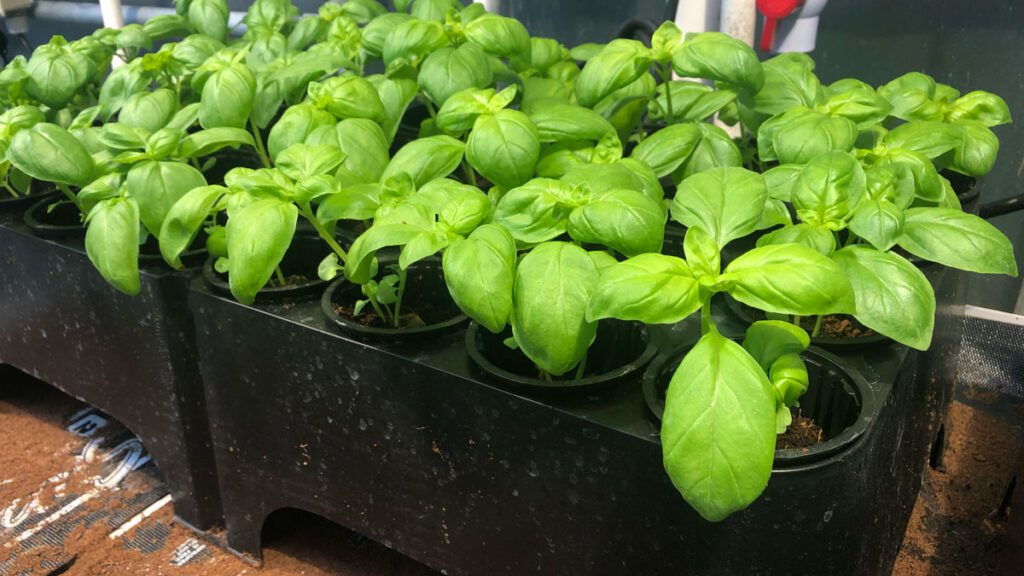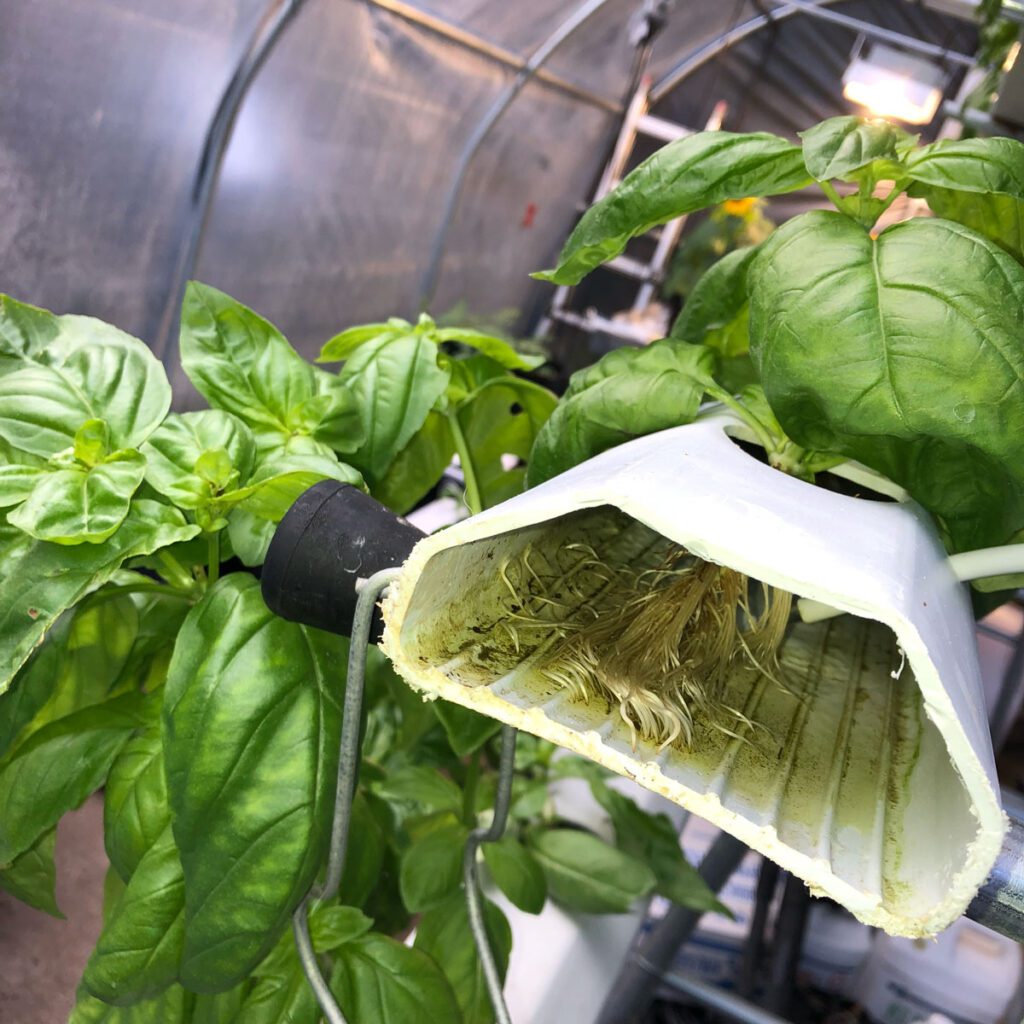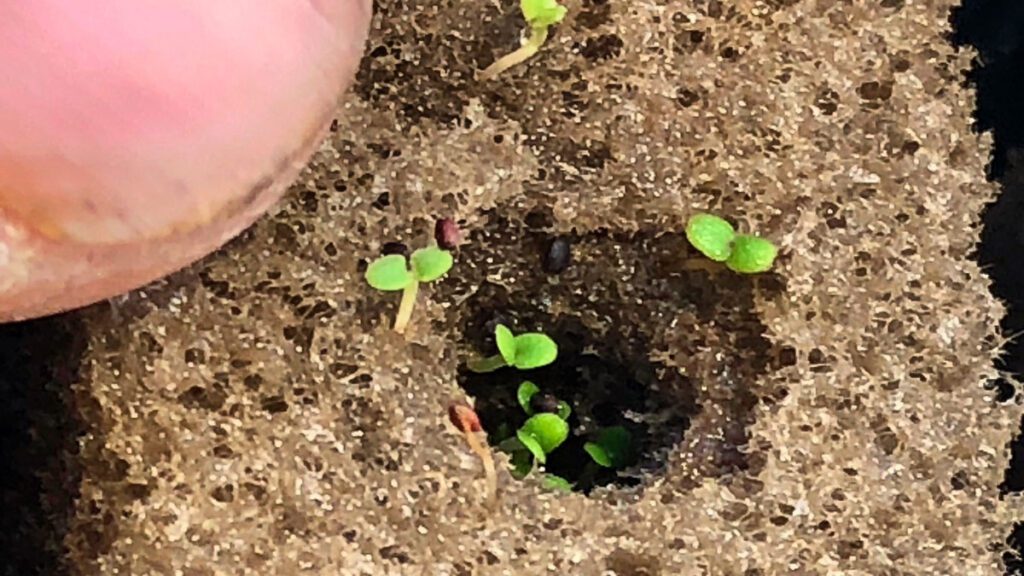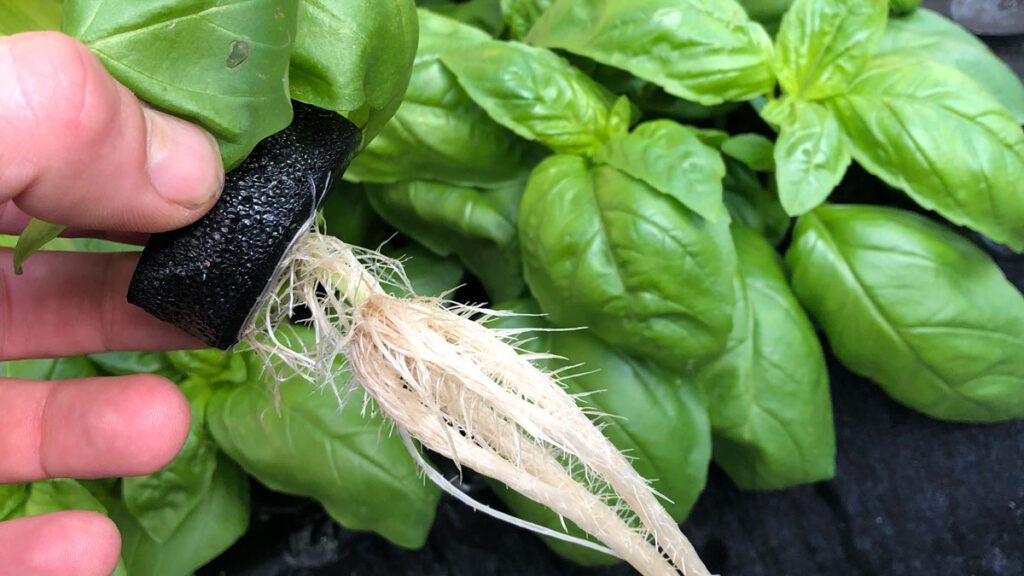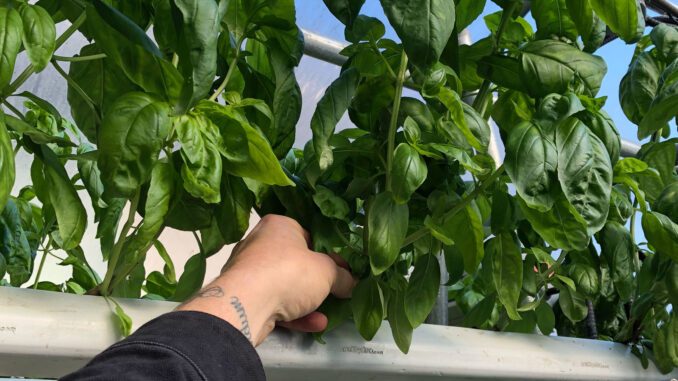
How To Grow Hydroponic Basil
Genetics:
Ocimum basilicum L. — cv. Genovese
Sweet Basil VS Genovese Basil–what’s the difference?
Growing hydroponic basil is very productive; the essential oil; content and cleanliness of the crop are often prized by gourmets and chefs alike. True “Genovese” Basil originates from and is produced in the Italian provinces of Genoa, Savona and Imperia*
*Wikipedia
Genovese basil grows larger and more vigorously than common sweet basil and is noted for very pungent notes, intense flavor and high oil content. Common sweet basil tends to grow shorter and begins flowering sooner, while Genovese cultivars resist flowering for longer, extending the production cycle and increasing yield potential.
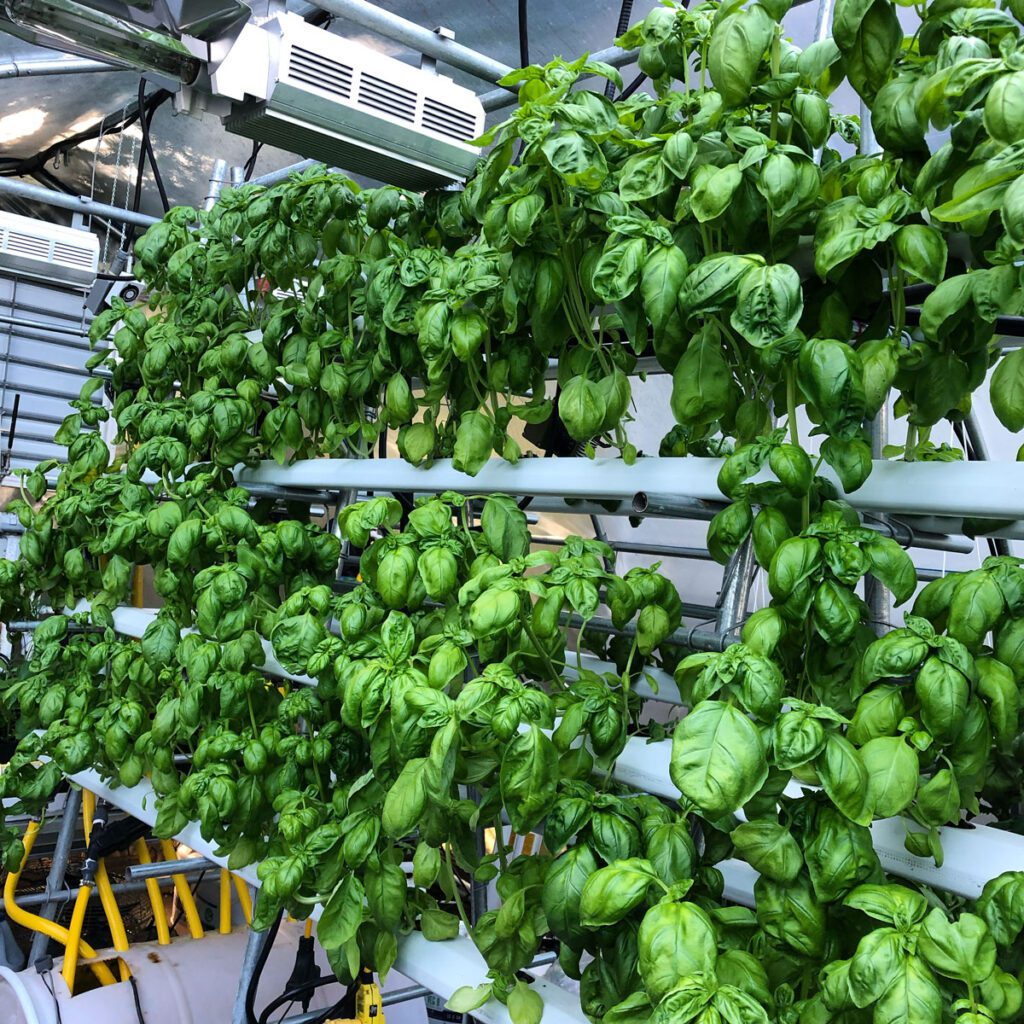
Leaves tend to grow almond shaped and can get as large as 6 inches long, with 4 inches long being average. When grown adeptly in a climate controlled water culture system, individual plants can reach up to three feet tall with many lateral branches by maturity.
Genovese Basil is typically harvested regularly during cultivation, rather than harvesting entire plants. Growing hydroponic basil means crops can be in production for several months before replacement.
Suitability for Hydroponic Cultivation:
Highly suitable for a variety of hydroponic growing methods, including NFT, Floating Raft Systems, RDWC, DWC and aeroponics. For growing hydroponic basil, Genovese basil tends to have a sturdier root system VS common sweet basil and resists pythium and other water borne plant disease causing organisms better than standard sweet basil.
Genovese basil genetics are especially well suited to higher density plantings, making it an ideal cultivar for fast crop turnovers in water culture systems.
General Uses:
Genovese basil is widely used in Italian and Mediterranean cooking and preparations. Excellent enjoyed fresh and raw as an accompaniment to tomato or cheese dishes. Essential for pizza margaretha. Genovese basil may be used dried or fresh in cooked dishes such as sauces, soups, stews, pasta, poultry and fish and more. Genovese basil is most notably combined with parmesan cheese, garlic, olive oil and pine nuts to make traditional pesto (Pesto alla Genovese).
Basil Facts, History:
According to italymagazine.com Genovese Basil was introduced to the Ligurian and Mediterranean area by the Romans. The Romans used it widely as a spread for bread called moretum and thought it to have healing powers. Note that moretum is very similar in ingredients to the pesto sauce enjoyed by many today.
Nutritional Content:
Here is the most notable nutrient content of 1 tablespoon (around 2 grams) of sweet basil
https://www.healthline.com/nutrition/basil#nutrition
General Environmental Recommendations for Growing Hydroponic Basil
Genovese basil thrives in warmer, drier climates. However, it is a hardy plant and will grow in a relatively wide temperature range with 74 to 85 deg F and a humidity range of 45 to 65% being optimal for best production. Outside these range(s) Genovese basil will grow (even all the way down to 52 deg F), however, plant health and production levels may suffer greatly.
When growing hydroponic basil, for faster production and heavier harvests, Genovese basil may receive supplemental atmospheric carbon dioxide levels and benefits from active aeration and increased dissolved oxygen at the roots.
Hydroponics production methods can greatly increase the growth rates, yields and essential oil content of Genovese basil versus traditional soil growing methods. Many growers note improved shelf life in water culture cultivated Genovese basil harvests.
Propagation:
Basil is most commonly propagated from seed, however, cuttings may be rooted from established plants to create more actively growing transplants quickly. Genovese Basil tends to resist flowering longer, for better production, when started from seed. However, the tradeoff is that seeded crops take several weeks before they begin to produce. Aeroponic propagation and cultivation methods are advantageous when seeking to increase the rate at which healthy transplants can be raised or grown to harvest.
Rooting time for asexual propagation is 5 to 10 days in favorable conditions
From seed, Genovese basil typically requires a few weeks to establish before transplant into production methods. Seeds typically germinate fast, ie within 72 hours
Water or Media temperature: 72 Deg F
Air Temperature: 78-85 Deg F
Humidity: 65-75%
Carbon Dioxide: 350-650 PPM
ORP: 350 mV
Lighting: 12-18 hours, 150-350 uMols
pH: 5.8-6.2
EC: 0.2-1.0
Hydroponic Basil Cultivation
Once two to three sets of true leaves have formed in seed plants, or there are sufficient roots in cuttings, young Genove basil plants will thrive in more intensive growing conditions. Keeping young plants bare rooted or minimizing the amount of growing medium required helps improve growth rates and vigor in Genovese basil water culture production.
Bare rooted production plants will tolerate warmer conditions in the root zone with less risk of pathogen outbreaks. When growing hydroponic basil, additions of hypochlorous acid further improve crop tolerance by reducing bioflims and helping to maintain optimal ORP (Oxidative Reduction Potential) levels.
Hydroponic growers note that bare rooted Genovese basil crops tend to resist flowering longer for increased production versus grown in substrates.
Once transplants are acclimated, typically just a few days after transplant into the final system, growers can begin to harvest shoots and leaves. This helps to promote a longer window for harvesting high quality material as it retards the flowering process. Additionally, the practice can provide donor material for rooting as cuttings to increase the number of plants in production quickly.
Genovese basil is typically grown for vegetative harvests, so complete vegetative growth formulas intended for hydroponics are recommended for supplying nutrients. Ideally, higher in Nitrogen with little or no Ammonium content. It’s important to ensure that adequate Calcium, Magnesium and Iron are present in sufficient levels to avoid deficiencies; particularly with frequent harvests.
Harvesting typically occurs every 7 to 10 days, so plants have sufficient time to regenerate and develop new healthy growth. By staggering the crop into sections, Genovese basil can be harvested daily (while still allowing for 7 to 10 days new growth in each section).
Genovese basil typically will not require crop support when grown in recommended conditions and harvested with regularity.
Water or Media temperature: 72 Deg F
Air Temperature: 78-85 Deg F
Humidity: 55-65%
Carbon Dioxide: 350-1000 PPM
ORP: 350-400 mV
Lighting: 12-18 hours, 350-1100 uMols
pH: 5.8-6.2
EC: 1.0-2.0 EC
Harvesting & Storage:
Genovese can be harvested fresh and kept refrigerated. Excess moisture or levels of cold once packaged will deteriorate quality. It is important that any packaging allows for some gas exchange, i.e. not airtight. For longer storage potential some growers cut stems with foliage and bundle loosely, placing the ends in cool filtered water, akin to cut flower storage. In some boutique markets, it may be possible to keep water culture grown basil live in specialty displays that are similar to the growing system the crop originates from.
Genovese basil, when dried, maintains flavor and aroma for long periods–even after two years when adeptly grown and stored.
Recipe Ideas & Related Links:
Traditional Pesto alla Genovese: https://www.italymagazine.com/recipe/pesto-alla-genovese
–

